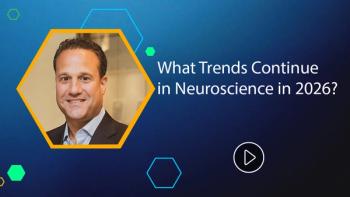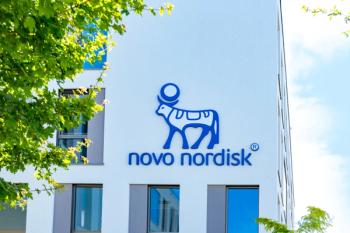
Q&A With Aoife Brennan, president and CEO of Synlogic, Inc.
Brennan describes what her career journey in pharma has looked like as a woman, and what she feels can be done to improve opportunities for other females in pharma. She also talks about how advocacy and commitment can similarly be applied to improve the rare disease space.
With diversity, equity, and inclusion (DE&I) a pressing issue at many companies today, Aoife Brennan, president and CEO of Synlogic, describes what her career journey in pharma has looked like as a woman, and what she feels can be done to improve opportunities for other females in pharma. She also talks about how advocacy and commitment can similarly be applied to improve the rare disease space.
Pharm Exec: How did you get into pharma, and did you experience any barriers as a woman?
Brennan: I trained as an endocrinologist and always saw myself working in an academic teaching hospital. But ultimately, it was curiosity that drove me to accept my first role in pharma with a small, private biotech company working in type 1 diabetes. I realized quickly that the company was backed by great science and great people, and had significant potential to positively impact patient lives. I also really enjoyed the team aspect and the ability to work collaboratively across multiple disciplines.
Over my career, I have been very fortunate to work with great mentors and in organizations where diversity is valued, which is a big reason why I am where I am today. Not everyone is so fortunate. I have had three children while building my career, and quality, reliable childcare was always a struggle. This situation has only deteriorated in the US over the past 10 years, and the COVID-19 pandemic has highlighted and exacerbated this problem even further. I think it is important to look at these barriers not just for the impact they have on individuals but also on how they can affect progress in research and drug development.
On the work front, like many women, I have experienced and witnessed so many episodes of bias. The majority of instances have been unconscious, which I think shows how established these practices have been in our culture. It is true that women are often not given the benefit of the doubt but must prove their competence over and over again. I have seen men who cannot deliver at a functional or individual level labeled as “more strategic” and given an even bigger job role and thought to myself, “that would never happen to a woman.” In addition to unconscious bias, women also still experience blatant acts of misogyny in the workplace, which is stunning in 2022.
Pharm Exec: How have you seen the industry change for women throughout your career?
Brennan: I think one of the most effective ways to address bias is through representation, changing the image we all have ingrained in our subconscious of what a successful leader, CEO, or chairman looks like. Seeing examples of individuals in prominent leadership positions from all different backgrounds and demographics is so powerful and empowering. We now have multiple great examples of CEOs in biotech who don’t fit that traditional mold; now people early on in their careers can see themselves in leadership roles, and hopefully we are broadening the image of what a CEO or other leader looks like.
Pharm Exec: What are some key ways to foster a more diverse workforce in pharma?
Brennan: The answer here is not hard—make decisions that foster diversity. To do that, you need to understand the benefits. When I think of how to improve workforce diversity, I think of the drug development analog and look across the talent pipeline. In the early phase, we can implement programs that expose high school and college graduates from under-represented demographics to the range of opportunities available in the biotech and pharma industries. For example, at Synlogic, we have had a partnership with the Gloucester Biotechnology Academy for more than six years. This has been a highly successful partnership and we have great team members from this program who continue to build their careers within Synlogic.
At mid-stage, we need to look at the factors that cause us to lose diverse talent and address them systematically. Targeted training in management, HR, planning, strategy, financial, and business acumen can be important. We also need to push for higher levels of objectivity in talent and performance assessment. I read an article recently that found that people from under-represented groups can interpret failure, or a career setback, differently and in a way that damages their sense of belonging. Biotech is full of failure and setbacks, so how do we keep an eye out for the disproportionate impact a career setback can have on certain populations?
In later-stage clinical development, we can help more experienced professionals who have established functional credibility to transition to become enterprise leaders and board members through mentorship, sponsorship, and coaching. This is the stage where having access to the networks of people who have gone before you can really help. The casual conversations among peers are an important learning ground for the skills and insights to be a good leader. In many cases in the pharma industry, ensuring that potential leaders from diverse backgrounds have access to those networks is critical.
Pharm Exec: Like diversity in the workplace, rare disease hasn’t been given much focus until recently. How do you feel these two areas overlap, if you do? Are there any lessons to learn from one to the other?
Brennan: Both workplace diversity and rare diseases are passions of mine, and I have seen firsthand the many ways that they can overlap. Developing new treatments for rare diseases, like we are doing at Synlogic with our proprietary approach to synthetic biology, requires respect and care for individuals. It means listening intently to patients and their unique needs, prioritizing their perspectives, and recognizing that not every individual—even with a rare disease—is the same. To be successful, we need to be creative, people-centric, and pragmatic. I think that so many leaders from patient communities have done a great job educating those of us in drug development and regulatory agencies about the opportunities to have a meaningful impact on their lives. Many of the recent advances in rare disease drug development are a credit to their work.
Moving the needle on diversity and inclusion in the workplace will require similar advocacy and commitment, but the potential benefits are considerable, and we know that the goal is achievable.
Newsletter
Lead with insight with the Pharmaceutical Executive newsletter, featuring strategic analysis, leadership trends, and market intelligence for biopharma decision-makers.





